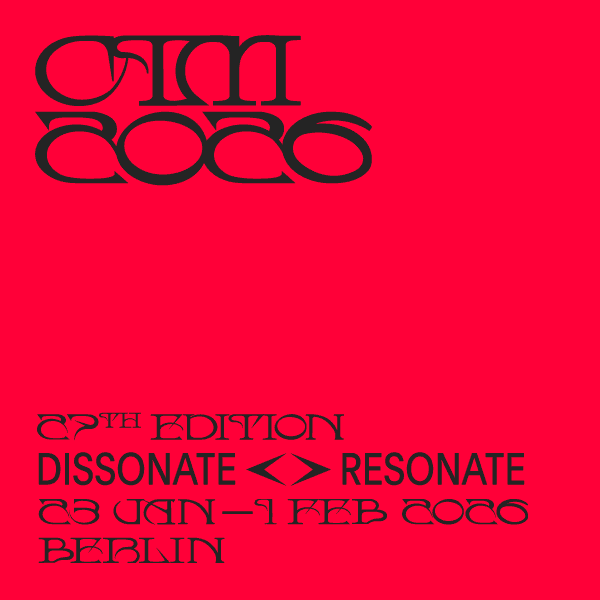A Mild-Tempered Headman in the Jazz Jungle
Pierre Dørge Shakes the New Jungle Orchestra
by Jan Andersen
In the land of Hans Christian Andersen's birth, fairytale magic is still capable of performing little, unexpected miracles. One such miracle occurred shortly before the New Year when the guitarist Pierre Dørge and his New Jungle Orchestra were named as the new Danish state music ensemble. This courageous and controversial nomination conferred official recognition on one of the most creative and original bands in Danish music today.
Despite the difficulty of holding 16 notorious individualists together, the non-profit New Jungle Orchestra has been a focal point for over a decade for the creative and provocative fusion of music styles from all over the world. Now, as official court musicians of the Kingdom of Denmark, the orchestra will provide music at major cultural promotions and during Queen Margrethe's official visits to other countries.
The 47-year-old headman and musical director of the New Jungle Orchestra, Pierre Dørge , resides in an idyllic oasis north of Copenhagen. Fruit trees surround the old white villa where he lives with his wife Irene Becker, a keyboard player who like himself is also a composer. Nervous activity prevails here amidst a creative chaos of scores, books, keyboards, guitars, serpent-like brass horns from Bali, a marimba with kalabas fruits, talking drums, a five-string Xalam banjo, and a harp-like kora from West Africa, all accompanied by a telephone that never stops ringing.
The New Jungle Orchestra was started in 1980 by Dørge and sax player Simon Spang-Hanssen, who had a vision of creating a Noah's Ark orchestra with two players on each instrument. The name was inspired by Duke Ellington's exotic jungle period at the Cotton Club in New York in the 1920s, where the duke shocked his white audience by fusing the animal noises of the jungle with the traffic noise of the city - a strange blend of kitsch and nature, car horns and lion's roars with snarling trumpets, plaintive trombones, and wailing saxophones.
Most of the musicians in Dørge 's band share his deep roots in jazz. Pierre Dørge began as a guitar soloist around i960, when he made a name for himself with his Copenhagen Jazz Quintet.
When the intellectualization of jazz was threatening to reduce it to a deep-frozen, unstructured, and attitudinizing form of improvisation, Dørge looked for new paths and found them under the influence of Danish saxophonist John Tchicai, among others; he began to investigate the expressive potential of the guitar and experimented with form by combining through-composed music with intuitive improvisation. In the seventies he fused this style with rock music in the group Thermasnius.
Both as a player and as a composer, Pierre Dørge has always kept his door open wide to new and controversial impulses, gradually transforming them into his own preferred idiom, where chaos confronts order. The open and complex character of his compositions often comes out in the conflict between simple ostinati or themes on the one hand, and collective improvisations on the other - and the magic moments with the New Jungle Orchestra are indeed often connected with improvisation, where a telepathic dialogue evolves between musicians and audience.
The avant-garde of contemporary art music have exerted more and more influence on Dørge over time, with Stravinsky, Ligeti, Stockliausen, Kagel, and Globokar as acknowledged sources. This development reflects a general tendency in late twentieth-century music for the boundaries between genres to be obscured, with rhythmic musicians deriving inspiration from the art music avant-garde and the latter deriving energy and vitality from the former.
Italian composer Luigi Nono thinks it is colonialist exploitation to steal material from ethnic music and join it with western art music in a collage. Dørge does not have the same ideological scruples about using music from Africa, Bali, the Orient, and the Arab world as raw material for his compositions for the New Jungle Orchestra. He does not consider himself to be a parasite; for him, World Music is a natural continuation of an age-old tradition in Western musical culture.
The archaeologists of music will doubtless be able to prove that exotic impulses have always played a central role in the renewal of the basic elements and forms of expression in occidental music. Various fads can be traced from the Renaissance to the present day, for example the Turkish janissary craze in the seventeenth century, the taste for chinoiserie in the eighteenth century, and the fascination with the mysterious East and gypsy romanticism in the nineteenth century. After the World Fairs in Paris in 1889 and 1900, impressionists like Debussy were strongly inspired by exotic music from Bali and the Orient. Actually, Debussy wrote World Music long before the term was invented.
For Pierre Dørge it has always been essential to encounter the soul in other cultures through the music he plays and listens to. The pseudo-ethnic kitsch that was used as incidental music in the Tarzan movies awakened this interest while he was still a child.
His first traumatic encounter with Arabic music took place in a restaurant in Paris, where the kitchen staff held a wild after-hours jam session on spoons, cooking pots, frying pans, and the slim guitar-like Ud. In the slipstream of flower power and the hippies' preoccupation with oriental mysticism came an Indian wave with Ravi Shankar at the end of the sixties. For a while, Dørge was involved with the meditative and therapeutic aspects of Indian music; as a justification he likes to quote Dollar Brand's aphorism, "Music is the healing force of the Universe."
However, Dørge did not make the obligator)' pilgrimage to India until 1986 when he visited Nepal. During the eighties he also made study trips to learn about music on Bali and in West Africa.
The inspiration of Balinese gamelan music is evident in his composition Tropical Nipfhts (1988) for chamber ensemble and electric guitar. But after several visits to the Konte family, a musical dynasty in the Gambian village of Brikama, it has been the music of the Mandingo clan that has supplied raw material and vitality to Pierre Dørge 's compositions for the New Jungle Orchestra. He has studied the refined patterns of African rhythm and the penta-tonic kora melodies with virtuosi Alhaji Konte and Melamin Fobareth. He has worked on the drums for hours every day, internalizing the characteristic African rhythms, and has tried to get his guitar to sing together with the crisp tones of the kora and the narrative mode of African melodies.
The New Jungle Orchestra is undoubtedly the leading exponent of World Music in Denmark and Scandinavia, but Dørge has never had the ambition to play authentic music. For him the global village is a reality not to be ignored. But the ethnic material is not just one of the most important sources of renewal of our musical means of expression, it also possesses artistic qualities that stimulate the listener's curiosity and liberate his fantasy and creative sensibility.
Pierre Dørge has come to the fore in recent years as a composer, while still continuing to pursue his career as an instrumentalist who places emphasis on improvisation and free form. In collaboration with the theater director Peter Langdal, he has written incidental music for Ibsen's Peer Gynt (1988) and Shakespeare's Hamlet (1992) at the Betty Nansen Theatre in Copenhagen. The specific demands of producing tight, disciplined music as an illustration and background to the stage action has been a new and valuable experience for him, sharply contrasted with the more abstract concert music he has produced with the New Jungle Orchestra.
In his well-cut dark suit, Dørge does not look like the lion-tamer in a 16-man jungle orchestra. He might easily be mistaken for a well trained official from the diplomatic corps. All that gives him away is the discreet Dada emblem on his lapel and the melancholy glint in his eye that reveals touches of anarchy, humor, and crazi-ness rolled into one.
In his musical universe there is a strong undercurrent of Dadaism and its spiritual father Hugo Ball, who led the pacifists' wild anti-art revolt at the Cabaret Voltaire in Zurich from 1916. Dørge owes a debt to those anarchic Dadaist guerillas of art and culture, who tried to liberate bourgeois art from its straitjacket of banality and convention. Their weapons were humor, irony, sarcasm, satire, and nonsense rhymes: "Yolifante bamla o falli bamla," says Hugo Ball's sound poem Kara-wane, which has given its name to the latest of the New Jungle Orchestra's CDs.
Infectious joie de vivre, optimistic dance rhythms, and artful provocation are central to the music of this orchestra, which is light and listener-friendly - it is hard to identify the dark and irrational side of existence in the work of Pierre Dørge . One senses an instinctive wish to avoid brutal, expressive confrontation with the expectations of the public.
When he composes or does an arrangement, he often starts out with the aim of getting the music to explode in wild and schizophrenic aggression, a clenched fist in the face of the audience. But his mild nature always ends up by taming the madness and anarchy and reducing it to cultivation and restraint. The poles in Dørge 's music are not laden with neurotic high tension that causes sparks to fly in frenetic or radical musical experimentation. However much his New Jungle Orchestra may fuse jazz and rock with African, Arabic, and Nordic ethnic elements, the mild and friendly provocateur of jungle music retains his typically Danish identity.
Jan Andersen is a Danish musicologist and freelance journalist
Illustrations are based on a linocutfrom Zaire, Africa
This essay is adapted from an article in 'Nordic Sounds 2/1993

